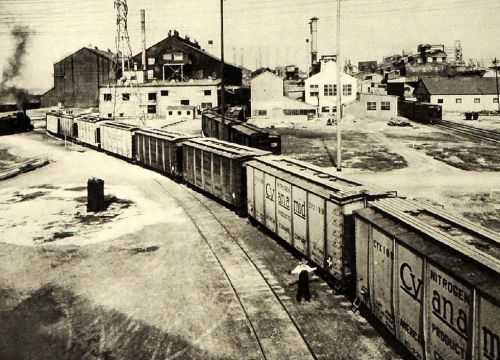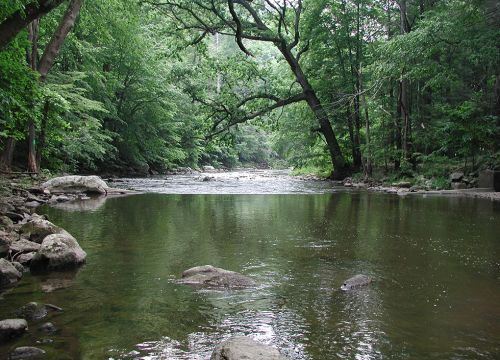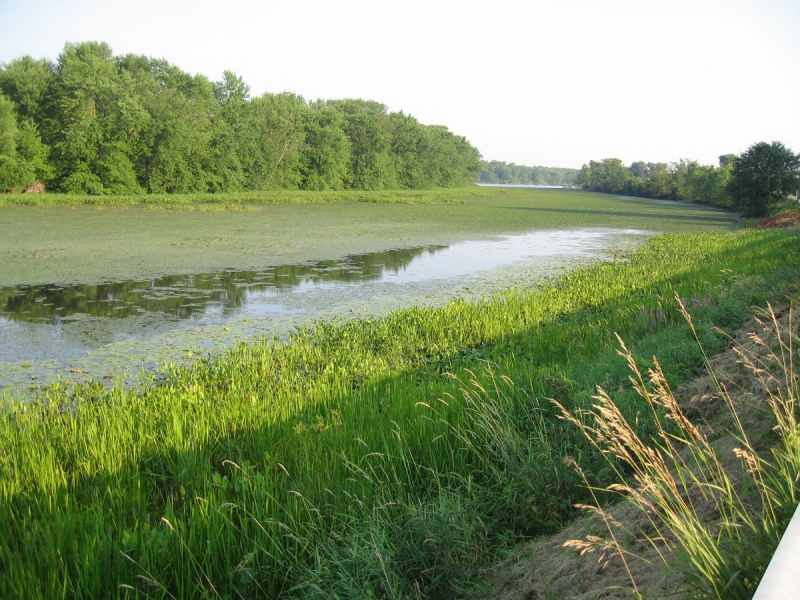
Hi! My name is Abisola Ajayi, and I’m a senior at the prestigious University of Maryland Eastern Shore. I’m currently majoring in biology. Growing up I learned at a very young age that education is a major aspect of life in today's world. Post-graduation, I’m planning to further my education and get into medical school.
In this Q&A series, I interviewed three scientists in NOAA’s Office of Response and Restoration. In this first interview, I talk with OR&R Regional Resource Coordinator Reyhan Mehran about the restoration side of OR&R’s work.
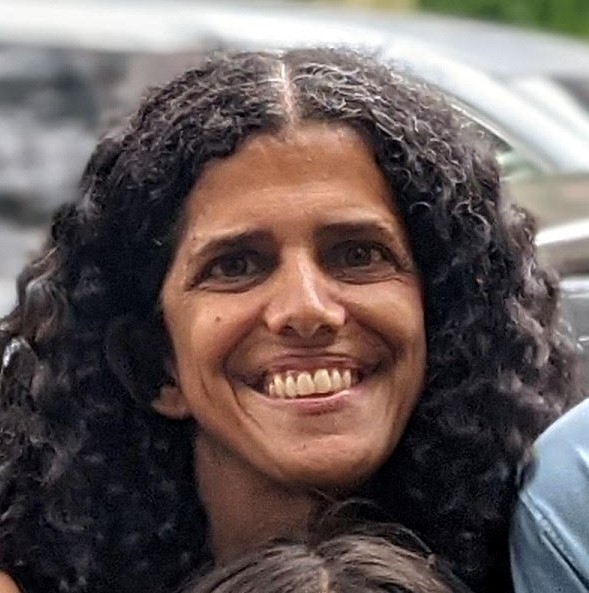 “Hazardous waste tends to be the byproduct of things that we all need and use in our lives. So if there was a factory making chemicals that we buy, that people need and that are sold in the stores. The process of making those chemicals often comes with making and creating some waste and there are laws about how those waste are to be handled and stored and disposed of so that they don't impact the environment but sometimes there are accidents. Before those laws were put in place, people didn't take care of how they dispose of things,” Reyhan Mehran, OR&R regional resource coordinator, said.
“Hazardous waste tends to be the byproduct of things that we all need and use in our lives. So if there was a factory making chemicals that we buy, that people need and that are sold in the stores. The process of making those chemicals often comes with making and creating some waste and there are laws about how those waste are to be handled and stored and disposed of so that they don't impact the environment but sometimes there are accidents. Before those laws were put in place, people didn't take care of how they dispose of things,” Reyhan Mehran, OR&R regional resource coordinator, said.
During the industrial revolution, factories dumped their waste with the sewage. All waste went to the sewage, and it wasn’t until much later that the risks of disposing of chemicals in this manner was fully realized. Many of those chemicals are so persistent, traces and even toxic levels still remain in American waterways today, requiring cleanup, assessment, and restoration.
Natural Resource Damage Assessment is the process that NOAA and other trustees use to study the effects of these incidents on fish, wildlife, surrounding habitats, and public use of those resources. Scientists work together to identify the extent of natural resource damage and specify the type and amount of restoration required. To measure impacts on the marine environment, NOAA scientists employ a number of tools, the majority of which have been developed within NOAA. These tools are also frequently used with OR&R mapping and spatial data products to determine environmental damage.
In the interview below, I talk with Reyhan Mehran about the restoration of industrial waste sites, and how NOAA handles the waste with lingering complications that continue to affect natural resources. Check out the full interview below to learn more!
Abisola: Hi Reyhan, My name is Abisola Ajayi from the University of Maryland Eastern Shore. I am a senior majoring in biology.
Reyhan: Hi Abisola, it's nice to meet you.
Abisola: Before I get into the interview questions, I would like to know a little more about yourself. Where are you from? Where did you go to school? What did you get your degree in? And how did you end up at NOAA?
Reyhan: I work in New York City right now, and I grew up outside of New York, so just in the suburbs a little bit north of New York City. I went to college on the coast at a small school and I had the opportunity there—I was a biology major, like you—because it was a really small school, I was able to do some independent research with some professors there in the summer, kind of like a fellowship. I got some funding to do a little bit of summer research. With that I was able to use a boat to do some work on some of the islands there, so I had all this data. So my senior year, I ended up doing this senior thesis based on the data that I collected that summer and that's how I started to become interested in marine science.
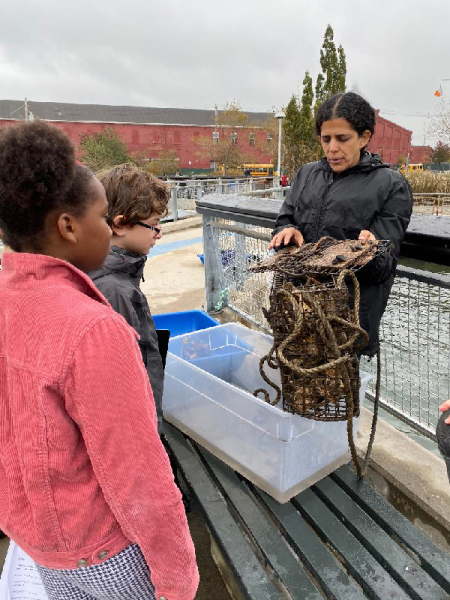
Before that I knew I was interested in environmental science and I knew when I was younger that I would be interested in doing something related to pollution, but I did not know exactly what. And interestingly, when I was an undergraduate, my thesis advisor was doing some consulting work for Exxon on an oil spill they were involved with in Alaska known as the Exxon Valdez. I had an opportunity to help with that work over the summer of 1989. We conducted several small experiments that summer looking at the impacts on salt marsh grasses of the type of oil spilled in Alaska. It wasn't a project that I was doing for my own research but I got to participate in some of that work too. After college, I worked as an environmental consultant conducting ecological risk assessments for Superfund sites in EPA Region 1 which is located in Boston. I worked on three sites: Sullivan's Ledge in Massachusetts, Rose Hill Landfill in Rhode Island, and Pine Street Canal in Vermont.
When I was in graduate school, I applied for and received a NOAA Sea Grant fellowship in Washington, D.C. called the Knauss Marine Policy Fellowship. That fellowship allowed me to spend a year in D.C., working in a federal agency on marine policy. It was a great experience and a really good way to learn more about the federal government. And that sort of opened my eyes to opportunities at NOAA. So that's how I ended up here, it was a long path.
Abisola: That sounds like a very interesting and long path. What do you find to be most challenging about your work? And what do you like most about your work?
Reyhan: The thing I like most about my work is that there are always new issues that come up on every single site that I've never encountered before and I get to learn new things. That's my favorite part about it, but a challenge that I like is to try to look creatively at how we do our work and see if there are ways that we can do it better so that we can improve how we serve the public. It's challenging because we’ve all been doing our work the way that we do it for a really long time and we work in teams with people from lots of different agencies and from different parts of NOAA. If I start thinking about doing things differently it impacts a lot of people. So the challenge is to try to help others see that if we step back and consider how we do our work and whether we can do it in a way that more appropriately serves the public that, in the long run, it will be better for our agency.
It's really easy to keep doing things the way that we've always done them. To try to make a change is sometimes hard but it's worth it. That's the hardest part of my job but it's also the most exciting part. Sometimes the hardest things are the most exciting. It's really easy to do things the way that you've always done them and it's harder to make changes but when you know something is really important it gives you that energy to do that hard work.
Abisola: Yes, I most definitely agree with you on that. What is your role in hazardous waste site assessment and restoration?
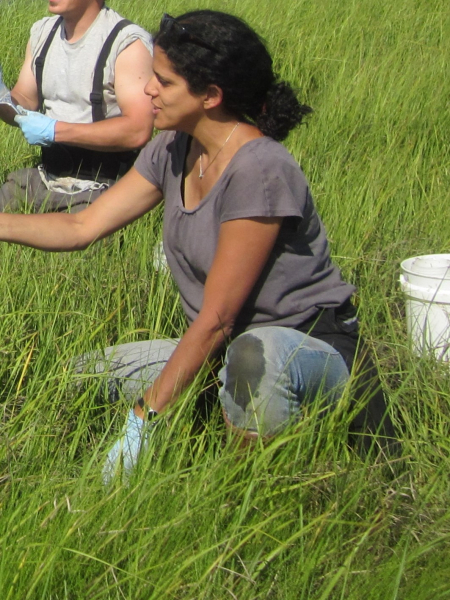
Reyhan: That's a good question. So I was mentioning that we work on these large teams and, within the Office of Response and Restoration, we have scientists with lots of different expertise. We have people who are ecologists, like me, we have people who are chemists, we have toxicologists, we have spatial data analysts, we have economists and we all work together to try to do a project that has a very big life cycle that starts in estimating what the impacts might be or what the injuries might be from the release of chemicals in the environment. It goes all the way to restoring what was lost because of those impacts, restoring those services to the people that were impacted by it.
I work the beginning portion of the project—on the assessment phase—and I look at where the chemicals are in the environment. I help design sampling plans to help identify where contamination might be and, if it is there, I look at whether or not there was a pathway from where the release occurred to that place where the chemicals ended up. If there is that pathway, then I help determine whether those chemicals are at concentrations that might be causing problems in the environment for the plants and animals that are supposed to be living in those habitats or to the people who should be able to use those resources. And then, if there are adverse impacts, I work with a team to try to quantify—to try to calculate—how much of an impact there was and how much restoration we might need to do to compensate for what happened.
So it might be years and years and years that these chemicals have been sitting in the sediments. For example, the release might have occurred a long time ago and the chemicals have remained in the sediments and have continued to be released into the water column and continued to be taken up, by fish for example. We look at all those years that the chemicals were there and that the fish were contaminated and how many years people weren't able to use those fish and then we try to figure out what could be done to compensate the public for that injury that occurred over all those decades. We might come up with a project that enhances the number of fish or that allows people to access the area where they weren't allowed to go because of contamination for many years.
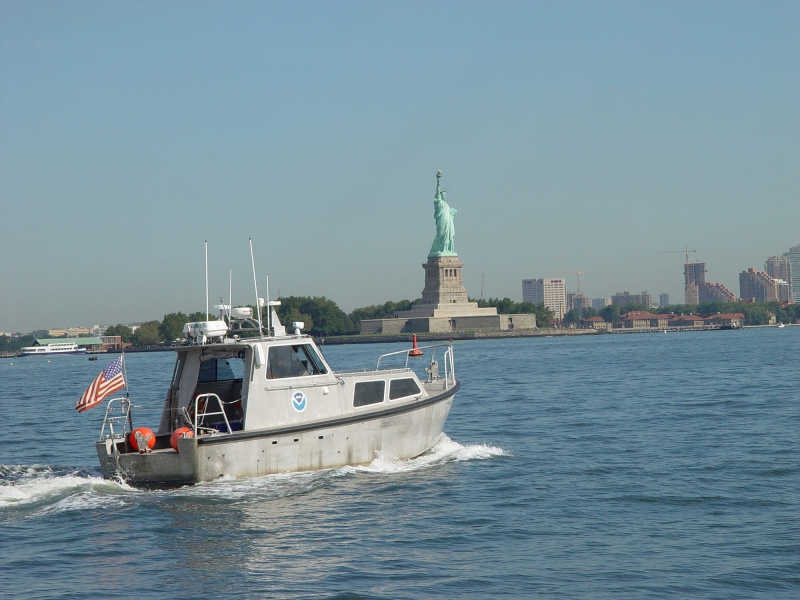
We figure out all those years that those services weren't provided and how many acres of restoration we might need to create or restore to compensate for that loss and then we work with our fisheries service or with potentially responsible parties to design and implement a restoration project. So it's a very long process from identifying that there might be some kind of an injury to figuring out whether there actually is one and then to calculating how large the injury is, how much restoration we would have to do to compensate for that injury, and coming to an agreement with the party or parties who are potentially responsible for those releases of the contaminant that caused the injuries. Those parties are responsible for making the public whole again.
We don't do a really good job of doing that whole process quickly enough but you know that's one of the things we need to start thinking about. How can we compensate people in a time frame that is useful for them so that they don't lose access, for generations, to the ecological services that healthy natural resources are supposed to be providing their communities. For oil spills it's often a very quick process: there is a release, we see it, we clean it up, and we compensate the public for the losses over that short time period. With hazardous waste sites, sometimes it takes so long for us to even decide that we are going to clean up a resource that it could be many decades before we get to restoration. That means that there are sometimes entire generations that have not had access to their coast or the waterway in their neighborhood. Kids are growing up not even knowing that their grandparents used to fish there. As a result, fishing might not even be a part of their culture anymore. We need to remember and account for that cultural loss and we need to figure out ways to incorporate that kind of loss into our work. Those are some of the things that we need to do better.
Abisola: Sounds like a lot. Do you think to yourself sometimes that "oh, this work is very much an overload?"
Reyhan: Yes, definitely. You have to have the mindset that the pieces that you're contributing to this very big effort are really important. It takes so long for the whole project to be completed that, on a daily basis or a weekly basis or even on an annual basis, you might not feel like you've accomplished anything tangible. You really have to be able to see the big picture and enjoy that you are an important part of that big picture. And that's true in science in general.
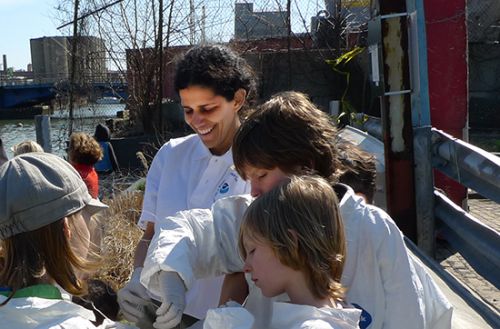
It's rare that a scientist can quickly contribute to something and see the fruit of that labor. Often we are working in collaboration with a lot of people and we ultimately do achieve something really great but it takes a long time and we all have to enjoy the process along the way. But we also need to remember that we are working toward something that is really important and bigger than what could be accomplished in a very short period of time.
Abisola: How is the assessment conducted on how much and what kind of restoration is needed?
Reyhan: We often assess a particular resource like a wetland for example. If a wetland is impacted we like to try to develop a restoration project that replaces the same thing that was impacted. If, for example, there was a loss of services from a wetland the ideal situation is that there'll be a similar restoration project. So if a wetland was impacted by chemicals and we were to create or enhance or restore the same type of wetland, we call that “in kind” restoration. But we can't always do that. Sometimes we have to do projects that are “out of kind” or that are different.
So if a river is impacted, for example, we can't really create another river, so sometimes we do projects that provide equivalent services that were lost in the river but they might be in a different kind of habitat. In those cases, we do calculations to try to estimate the benefits from one type of project that would be needed to compensate for another type of injury.
For example, if a river bottom was impacted but we can't replace the river bottom, we might instead create tidal wetland habitat; how much tidal wetland habitat would need to be created to compensate for lost river bottom? We use different metrics for trying to make those conversion calculations. We typically negotiate a settlement agreement with the potentially responsible party for a project that provides the public with the equivalent of the services that were lost due to the release of contaminants. Out of kind restoration is not unusual.
Abisola: What happens to the plants and animals in the area that are impacted by the hazardous materials?
Reyhan: So if the impacts are great enough and the lead clean up agency makes a decision to clean up the contamination, sometimes the clean up itself could result in impacts to areas. Typically, the lead clean up agency will restore the habitat that was impacted by the clean up action. If the area was dredged, for example, they might restore the habitat in place.
Sometimes it's not practical to clean up a contaminated area because it might be a really sensitive habitat and there isn't that much contamination there. For example, with oil spills, sometimes that oil will break down and the areas that were impacted might recover faster if they're not actively addressed through dredging or even cleaned off. They might just be left alone and sometimes they could recover faster that way. So there are times when we don't want to actively clean up a contaminated habitat. The lead clean up agency might decide not to do anything to clean up the area—to just allow natural recovery to occur. So a contaminated area might get cleaned up or sometimes it might be left alone to naturally recover.
Abisola: When people are aware of contaminated fish in the water, how does it affect recreational experience? Like kayaking, etc.
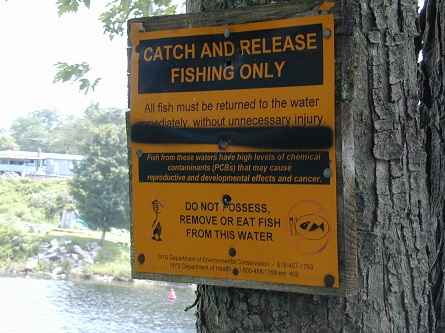
Reyhan: Well, it's complicated. On a simple level, if the government knows that a waterbody is contaminated and they sample the fish and they see that there are high concentrations of contaminants in the fish that would pose a health threat to people if they ate them, the state will issue an advisory to people and warn them not to eat the fish. They call that a fish consumption advisory. Or they might restrict access to a waterbody that is contaminated.
Other concerns are ensuring that notifications are posted in all the languages spoken by people living in the area and ensuring that notices are posted in places where people who fish will see them so that they are aware that the fish are contaminated. You might only find out that a fish consumption advisory is in place for a waterbody if you went to get a fishing license because they give you a brochure that tells you where you can and cannot fish. Your question is a good one. It's an issue that we talk about. How can we do a better job of informing the public that there is a fish consumption advisory in place. I live and work in New York City and there are a lot of access points to the water because New York City is essentially a series of islands. A lot of the waterways in New York City have fish consumption advisories associated with them—pretty much every waterbody here has a fish consumption advisory but the details of the advisories vary from place to place within New York City. There aren't signs posted in every single location because there are just so many access points. Even where there is signage, you may see people fishing. We need to do a better job of letting people know the risks of eating these fish.
In terms of the other recreational uses that you mentioned, like kayaking and canoeing in the waters, it depends on how contaminated the water is, and how acute the release is. In some cases, there could be a restriction on some of the recreational activities where you are in close contact with the water like kayaking.
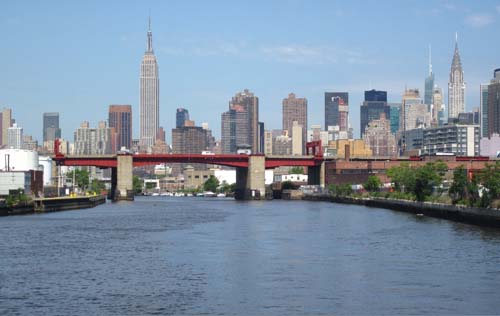
There are recommendations on some waterways to limit that kind of activity to the times when the conditions are better—for example not to do those kinds of activities when there has been a recent storm and there's a lot of turbulence and biological contamination in the water. But, for the most part, those kinds of activities are permitted in waterways—around New York City at least.
Abisola: Thank you so much, Reyhan, for taking the time to talk to us about the restoration of industrial waste sites.

